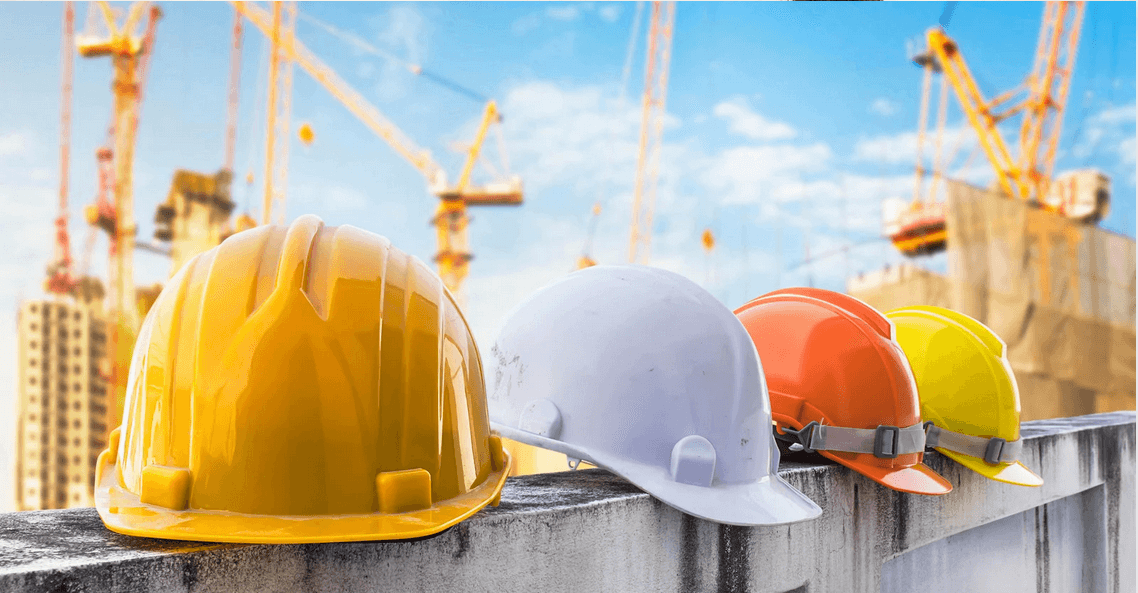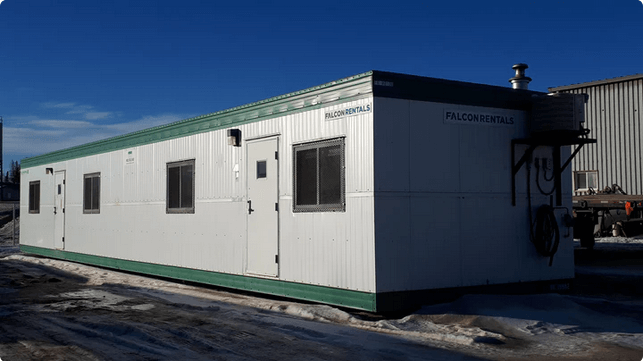My shopping cart
Your cart is currently empty.
Continue Shopping
Setting up a job site in Alberta, with its diverse landscapes and weather patterns, can be daunting. Whether you're breaking ground on a commercial project or laying pipelines in the remote stretches of the province's north, each job site has unique challenges. However, one of the most critical steps to ensuring the success of any project, big or small, lies in the efficiency and effectiveness of your job site setup. In this blog, we'll explore the essentials of optimizing your job site in Alberta, focusing on selecting the right equipment. From understanding different equipment functionalities to grasping why the right machinery is not just a matter of productivity but also of safety and operational efficiency, we'll guide you through making the best choices for your specific needs. We aim to provide insights and tips to streamline your operations, ensuring that your project meets and exceeds expectations. Whether you're a seasoned contractor or gearing up for your first big venture, stick with us to discover how to lay the groundwork for success on your next Alberta project.
When planning a construction project in Alberta, accurately assessing your venture's scale and specific needs is crucial. Begin by defining the project's scope: outline the objectives, timelines, and resources needed. For projects in Alberta’s diverse environments, consider the geographical scope. Each location presents its own set of challenges and requirements, from transportation logistics to the availability of local resources. Determine the size of your workforce, the types of machinery needed, and the materials required to meet your project's goals. Rigorously analyzing your project scope and requirements early on can prevent unexpected challenges and ensure your setup is tailored for maximum efficiency.
Evaluating your job site is another pivotal step, particularly in Alberta, where terrain, accessibility, and environmental conditions vary greatly. Here are some tips for conducting a thorough site evaluation:
Assessing these factors thoroughly will guide your decisions in selecting the right equipment and planning for a successful construction project in Alberta. Your site evaluation not only influences the logistical aspects of your project but also ensures compliance with provincial regulations and environmental standards, contributing to the project’s overall success and sustainability.
The right equipment selection is pivotal for the efficiency and safety of your construction project in Alberta. Understanding the machinery and tools that align with your project's needs can significantly impact its timely and successful execution.
Choosing the right earth-moving and construction machinery, such as excavators, bulldozers, and loaders, is crucial for your project’s foundational work. With versatile applications from digging trenches to heavy lifting, excavators must be selected based on their size and digging capacity, which match your site's scale and soil type. Bulldozers, known for their powerful capability in clearing and grading land, should be chosen with an eye on blade size and tractor type to suit the terrain of your Alberta project site. Loaders, vital for moving large volumes of materials, must be assessed for bucket capacity and maneuverability to handle the site's specific requirements efficiently. Each piece of machinery should be evaluated for its primary function and adaptability to Alberta’s varied environmental conditions and terrains.
Ensuring reliable power sources and adequate lighting is indispensable at the early stages of construction. Generators are a core component, providing electricity to tools, machinery, and site offices where grid power is unavailable or unreliable. Choosing generators with sufficient capacity and durability for Alberta’s weather conditions is essential. Lighting equipment, meanwhile, extends productive working hours and enhances safety. Portable, high-intensity light towers can illuminate significant portions of the site, enabling early morning or late evening work while minimizing the risk of accidents.
Maintaining a secure construction site protects workers and the project timeline. Scaffolding, barriers, and safety signage play a critical role in this. Scaffolding must be robust enough to withstand Alberta's variable weather while offering secure access to high or hard-to-reach areas. Barriers protect unsafe zones, direct traffic, and safe site perimeters, crucial for preventing unauthorized entry and accidents. Safety signage helps communicate hazards and instructions clearly, ensuring everyone on-site knows safety protocols. Each component contributes to a well-organized, efficient, and, most importantly, safe construction environment.
Installing temporary fencing at your construction site in Alberta offers several advantages, primarily by enhancing security and privacy. Temporary fencing prevents trespassers and potential theft, safeguarding equipment, materials, and the work area. This is especially pertinent in remote or high-traffic areas with an increased risk of unauthorized access. Furthermore, it provides a boundary that ensures the project's privacy, minimizing public scrutiny and interference that could delay the work. Temporary fences can be easily moved and adjusted as the project progresses, offering flexibility to adapt to changing project scopes and site layouts. Additionally, they help design specific storage, work, and safety zones, contributing to the overall organization and efficiency of the job site.
For large construction projects in Alberta, providing adequate sanitation facilities is not just a matter of convenience but a legal and moral necessity. Portable toilets play a crucial role in maintaining hygiene standards, reducing the risk of contamination, and ensuring a dignified and comfortable working environment for the workforce. Their strategic placement around the site ensures accessibility for all workers, which is particularly important in vast or dispersed job sites. This accessibility helps maintain high productivity as workers travel less to and from distant facilities. Compliance with health and safety regulations is critical, and adequate sanitation facilities are part of these requirements. Providing portable toilets demonstrates a commitment to worker welfare, contributing to higher morale and a more motivated workforce.
Efficient on-site administration is key to a successful construction project in Alberta, and office trailers are a fundamental component in achieving this. These portable offices offer a flexible, cost-effective solution for on-site management, planning, and coordination activities. Equipped with essential utilities, they provide a comfortable and productive work environment regardless of the external weather conditions. Office trailers can be quickly deployed and relocated as needed, adapting to the project's changing needs without the expense and delay of constructing permanent facilities. They serve as a central hub for project managers, engineers, and administrative staff to conduct meetings, manage documents, and perform other critical tasks efficiently. Office trailers significantly enhance communication, problem-solving, and oversight on construction sites by ensuring that decision-makers and support staff are close to the action.

Selecting equipment that can endure Alberta's dynamic climate requires strategic planning and an understanding how weather conditions affect construction operations. This section provides insights into weather-proofing your site and adapting equipment choices to accommodate seasonal changes, ensuring uninterrupted progress from spring to summer.
The transition from spring to summer in Alberta marks a significant shift in weather patterns, affecting equipment selection and application. You must equip your job site in winter with proper heating and thawing equipment. Additionally, ensuring adequate lighting is crucial for maintaining productivity and safety with shorter days. As it moves into summer, the increase in temperature may require equipment with better cooling systems to prevent overheating. It’s also beneficial to have equipment with interchangeable parts or attachments easily adaptable for different ground conditions, whether dealing with spring's moisture or summer’s dryness. Additionally, scheduling regular maintenance checks can preempt equipment failures due to seasonal wear and tear, ensuring that your machinery is always in top condition to handle the shifting climate.
Wildfires in Alberta present a significant challenge to construction projects, highlighting the need for comprehensive planning and response strategies to mitigate risks. The increasing frequency and intensity of wildfires due to climate change require construction sites to be adaptable and prepared. Key considerations include the development of evacuation plans, the implementation of fire-resistant materials and construction methods, and the strategic placement of firefighting equipment on-site. Regular training and drills for all personnel can ensure a quick and efficient response during a wildfire, minimizing potential harm to workers and damage to the construction site. Additionally, staying informed about local fire bans and conditions through Alberta's wildfire alert system is crucial for timely decision-making and adjustments to construction schedules. By integrating wildfire preparedness into the project planning phase, construction managers can safeguard their projects, personnel, and assets against the unpredictable nature of wildfires.
The importance of daily inspections cannot be overstated to ensure equipment reliability and safety on construction sites. Conducting routine checks helps identify potential issues before they escalate into significant problems, thereby reducing downtime and preventing accidents. Regular inspections can also extend the lifespan of machinery, offering significant cost savings over time. These checks should cover all aspects of the equipment, including engines, hydraulic systems, electrical systems, and safety features. By maintaining a comprehensive checklist and recording the outcomes of daily inspections, site managers can ensure a systematic approach to equipment maintenance, enhancing overall site safety and productivity.
Equipping operators with the necessary training on the latest equipment technologies is pivotal for the smooth operation of construction sites. Comprehensive training programs help operators understand the intricacies of advanced machinery, enabling them to maximize efficiency while minimizing the risk of accidents. This emphasis on proper training is about handling the equipment safely and understanding its maintenance needs, ensuring operators can identify signs of wear and tear or potential malfunctions. Furthermore, ongoing training sessions should be standard practice, accommodating technological updates and safety regulation changes. Ultimately, skilled and knowledgeable operators are essential for maintaining a high standard of safety and efficiency on any construction project.
In recent years, environmental sustainability has become a crucial consideration in the construction industry. Adopting green building practices helps minimize the environmental impact of construction projects and leads to more cost-effective and energy-efficient buildings. Utilizing renewable resources, sourcing materials locally to reduce transportation emissions, and implementing waste reduction strategies are all vital steps toward sustainability. Furthermore, integrating energy-efficient designs and systems can significantly decrease a building's carbon footprint. Construction projects in Alberta have the opportunity to lead by example, showcasing how innovative, sustainable practices can be seamlessly integrated into the development process, ultimately contributing to a healthier planet and a more sustainable future.
The benefits of maintaining a well-equipped job site in Alberta's dynamic construction environment are undeniable. Each measure contributes significantly to the project's success, from ensuring compliance with health and safety regulations through providing sanitary facilities to selecting climate-resilient equipment. Weather-proofing the site and adapting to seasonal changes prevent interruptions and safeguard machinery and personnel against the unpredictable climate, especially with the increasing threat of wildfires. Routine equipment checks and comprehensive operator training reinforce the importance of preparedness, enhancing safety and productivity. By utilizing quality equipment, staying informed about weather and wildfire risks, and prioritizing maintenance and training, construction projects can achieve greater efficiency, safety, and resilience against environmental challenges. Ultimately, these practices protect workers' well-being and ensure timely and cost-effective completion of projects, underscoring the critical role of a well-equipped job site in the construction industry.